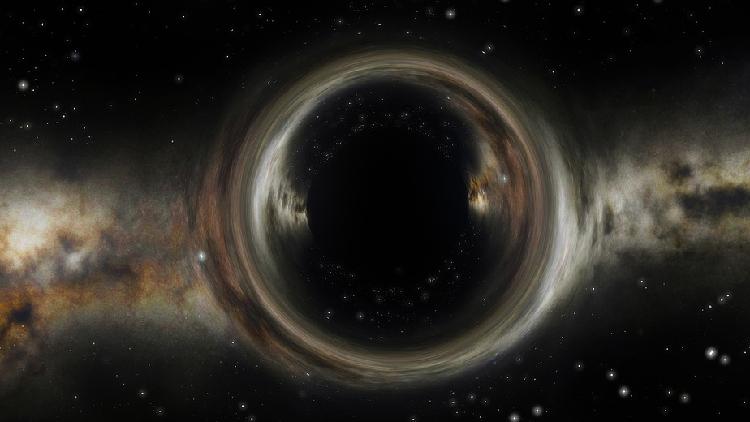Astronomers Study a Black Hole That Might Have Formed Peacefully
Researchers have discovered a black hole that seems to have formed from the collapse of a massive star's core during its final stages, but intriguingly, it did so without the typical explosion. This black hole was found to be gravitationally linked to two ordinary stars.

Researchers have discovered a black hole that seems to have formed from the collapse of a large star's core during its final stages, but without the expected explosion. This black hole has been observed in a gravitational relationship with two ordinary stars.
While black holes have previously been detected in binary systems, orbiting one other star or black hole, this marks the first known case of a triple system featuring a black hole alongside two stars.
Located approximately 7,800 light-years from Earth in the constellation Cygnus, this black hole—designated V404 Cygni—has undergone significant study since its confirmation in 1992. It was initially thought to be in orbit with just one other star, but new data from the European Space Agency's Gaia space observatory revealed the presence of two stellar companions.
According to the researchers, this black hole has an estimated mass about nine times that of the sun and is actively consuming one of its companions—a star that is roughly 70% the mass of the sun. This star completes an orbit around the black hole every six and a half days at a distance equivalent to about one-seventh of the distance between Earth and the sun.
The black hole is believed to be extracting material from this companion star, which has expanded during its natural aging process into what is known as a red giant phase.
Additionally, the researchers identified another star, approximately 1.2 times more massive than the sun, that is gravitationally linked to the other two but situated much farther away. This star orbits the trio every 70,000 years at a distance 3,500 times greater than that separating Earth and the sun.
The researchers conjecture that a gentler formation process is likely for this black hole. They noted that the triple system would have disintegrated if the star that became the black hole had undergone an explosive event.
Traditionally, it is believed that black holes form when a massive star runs out of nuclear fuel at its core and collapses under its own gravity, resulting in a massive explosion that ejects its outer layers into space. The remaining crushed core then forms the black hole.
However, some astronomers suggest an alternative pathway known as "direct collapse," where the star collapses after depleting its fuel without exploding.
"We call these events a 'failed supernova.' Basically, the gravitational collapse just acts too quickly for the supernova to be able to trigger, and you get an implosion instead, which sounds super dramatic and awesome, but it's 'gentle' in the sense that you don't expel any matter," explained Kevin Burdge, an astronomer at the Massachusetts Institute of Technology and lead author of the study published in the journal Nature.
The team estimated that the stars in this triple system originated about 4 billion years ago as normal stars.
"The triple system could not have survived if the black hole was born with a natal kick, so this discovery tells us that at least some black holes form without a kick, implying a quiet implosion rather than an explosive supernova," added Kareem El-Badry, an astronomer at Caltech and co-author of the study.
This system won't remain stable indefinitely, as the black hole is consuming its closer neighbor. This suggests that some known binary systems featuring a black hole and a regular star might have originally formed as triple systems, only for the black hole to eventually devour one of its partners.
"People have actually predicted that black hole binaries might form mostly through triple evolution, but there was never any direct evidence until now," El-Badry noted.
Emily Johnson for TROIB News
Discover more Science and Technology news updates in TROIB Sci-Tech












